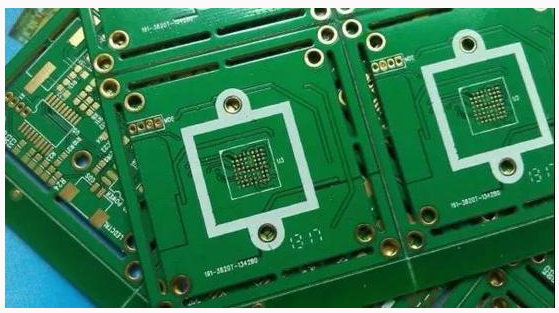What is the difference between PCB board and PCBA
PCB (PrintedCircuitBoard), the Chinese name is printed circuit board, also known as printed circuit board. It is an important electronic component, a support for electronic components, and a carrier for electrical connection of electronic components. Because it is made by electronic printing, it is called a "printed" circuit board.
After electronic equipment adopts printed boards, due to the consistency of similar printed boards, manual wiring errors can be avoided, and electronic components can be automatically inserted or mounted, automatic soldering, and automatic detection, ensuring the quality of electronic equipment, Improve labor productivity, reduce costs, and facilitate maintenance.

The reason why PCB board can be used more and more widely is because it has many unique advantages, which are summarized as follows.
Manufacturability: The use of modern management can carry out standardization, scale (quantity), automation and other production to ensure product quality consistency.
High-density possible: For decades, the high-density of printed circuit boards has been able to develop along with the improvement of integrated circuit integration and the advancement of mounting technology.
High reliability: Through a series of inspections, tests and aging tests, it can ensure that the PCB board can work reliably for a long time (use period, generally 20 years).
Testability: A relatively complete test method, test standard, various test equipment and instruments have been established to detect and appraise the eligibility and service life of PCB products.
Designability: For the various performance (electrical, physical, chemical, mechanical, etc.) requirements of the PCB board, the printed board design can be realized through design standardization, standardization, etc., with short time and high efficiency.
Assemblability: PCB board products are not only convenient for standardized assembly of various components, but also can be automated and mass-produced on a large scale. At the same time, PCB and various component assembly parts can be assembled to form larger parts and systems, up to the complete machine.
Maintainability: As PCB board products and various component assembly parts are standardized design and large-scale production, these parts are also standardized. Therefore, once the system fails, it can be replaced quickly, conveniently and flexibly, and the system can be quickly restored to work. Of course, there can be more examples. Such as miniaturization and weight reduction of the system, and high-speed signal transmission.
PCBA is the abbreviation of PrintedCircuitBoard+Assembly in English, which means that the empty PCB board passes through the SMT loading, and then passes through the entire process of DIP plug-in, referred to as PCBA. This is a common way of writing in China, while the standard way of writing in Europe and America is PCB’A, with an oblique dot. This is known as an official idiom. When we communicate or promote with foreign customers, they often ask what PCBA means.
SMT and DIP are both ways to integrate parts on the PCB. The main difference is that SMT does not need to drill holes on the PCB. In DIP, the PIN pins of the parts need to be inserted into the holes that have been drilled.
SMT(SurfaceMountedTechnology)
Surface mount technology mainly uses mounters to mount some tiny parts on the PCB. The production process is: PCB board positioning, solder paste printing, mounter mounting, reflow oven and finished inspection. With the development of technology, SMT can also mount some large-size parts, for example, some larger-size mechanical parts can be mounted on the motherboard.
SMT integration is very sensitive to positioning and the size of parts. In addition, the quality of solder paste and printing quality also play a key role.
DIP means "plug-in", that is, inserting parts on the PCB board. Due to the large size of the parts and not suitable for placement or the manufacturer's production process cannot use SMT technology, the parts are integrated in the form of plug-ins. At present, there are two implementation methods of manual plug-in and robot plug-in in the industry. The main production process is: sticking adhesive (to prevent tin plating to the place where it should not be), plug-in, inspection, wave soldering, and brushing (removal in the furnace Stains left in the process) and made inspection.
PCB board refers to the circuit board, and PCBA refers to the circuit board plug-in assembly, SMT process.
One is a finished board and the other is a bare board
PCB (PrintedCircuitBoard) is called "printed circuit board", which is made of epoxy glass resin material. According to the number of signal layers, it is divided into 4, 6, and 8 layers (multilayer circuit boards), with 4 and 6 layers. The most common. Chips and other chip components are pasted on the PCB board.
PCBA may be understood as a finished circuit board, which means that PCBA can only be counted after the processes on the circuit board are completed.
PCBA=PrintedCirruitBoard+Assembly.
That is to say, the empty PCB board goes through SMT loading, and then goes through the entire manufacturing process of DIP plug-in, referred to as PCBA.
PCB (PrintedCircuieBoard) is the abbreviation of printed circuit board, usually on the insulating material, according to the predetermined design, made into the conductive pattern of the printed circuit, the printed element or the combination of the two is called the printed circuit. The conductive pattern that provides electrical connections between components on an insulating substrate is called a printed circuit. In this way, the printed circuit or the finished board of the printed circuit is called a printed circuit board, also called a printed circuit board or a printed circuit board.
There are no parts on the standard PCB, and it is often called "Printed WiringBoard (PWB)".